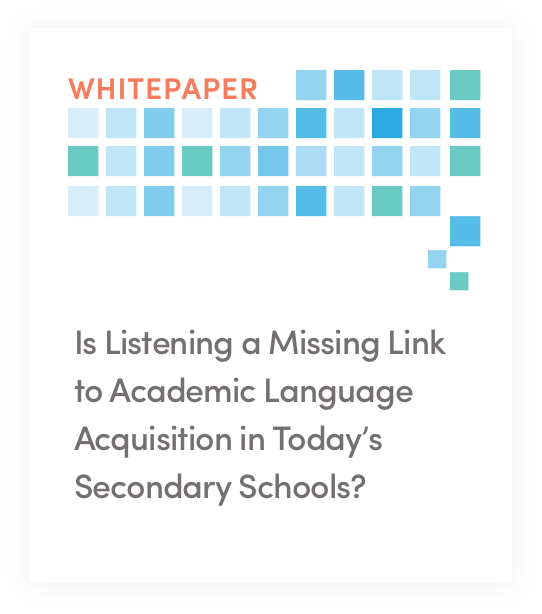Why Listening?
Why practice listening? Because listening comprehension is fundamental to literacy.The Literacy Puzzle
Only 36% of U.S. 4th graders
Reading scores are stagnant. Only 36% of U.S. 4th graders read proficiently, a rate that has barely moved over 20 years. This means many kids are entering middle grades without requisite reading comprehension.
With state-level testing of listening in at least 22 different states,
In order to move the needle on achievement, we need to rethink literacy instruction. Listening needs to be a core part of literacy instruction and implemented across the curriculum.
 Our research reveals that listening comprehension becomes the dominating influence on reading comprehension starting in the upper elementary years, as text complexity increases.
Our research reveals that listening comprehension becomes the dominating influence on reading comprehension starting in the upper elementary years, as text complexity increases.
TIFFANY HOGAN, PHD.
Director of the Speech and Language (SAiL) Literacy Lab at MGH Institute
Good Listeners are Better Learners
23 research studies document the
link between listening and reading.

Research shows that if you are not a good listener, you won’t be a good reader.
At its core is the basic tenet that reading comprehension is the result of listening comprehension plus decoding (Gough and Tunmer, 1986). Now there is new research evidence concerning a growing number of children who fail to develop adequate reading comprehension skills primarily due to poor listening comprehension. (Hogan, 2014)
And since students can generally listen 2-3 grade levels above what they can read, we can use the power of listening to introduce more complex language, vocabulary and topics. Read aloud and other listening activities have long been effective for introducing advanced academic vocabulary in context. Building vocabulary and background knowledge have been proven keys to reading comprehension outcomes.
Listening Can Be Improved
With Listenwise, scores at Clovis North High School improved by 26%You can make an impact by teaching listening- whether you are teaching reading or teaching social studies, science or language, by focusing on building critical listening skills YOU can make a difference in your students’ literacy.
Listenwise uses research-based strategies to impact listening comprehension, literacy, and academic language. Listening and reading together improve both skills. Research shows that listening to English while reading English subtitles helps decoding and improves reading.
While
Reading:
Accuracy
by 52%
Comprehension
by 76%
